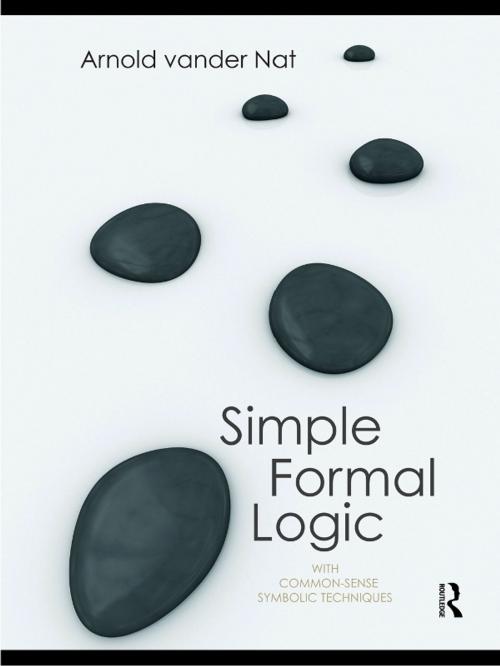Simple Formal Logic
With Common-Sense Symbolic Techniques
Nonfiction, Religion & Spirituality, Philosophy, Logic| Author: | Arnold vander Nat | ISBN: | 9781135218690 |
| Publisher: | Taylor and Francis | Publication: | March 5, 2010 |
| Imprint: | Routledge | Language: | English |
| Author: | Arnold vander Nat |
| ISBN: | 9781135218690 |
| Publisher: | Taylor and Francis |
| Publication: | March 5, 2010 |
| Imprint: | Routledge |
| Language: | English |
Perfect for students with no background in logic or philosophy, Simple Formal Logic provides a full system of logic adequate to handle everyday and philosophical reasoning. By keeping out artificial techniques that aren’t natural to our everyday thinking process, Simple Formal Logic trains students to think through formal logical arguments for themselves, ingraining in them the habits of sound reasoning.
Simple Formal Logic features:
- a companion website with abundant exercise worksheets, study supplements (including flashcards for symbolizations and for deduction rules), and instructor’s manual
- two levels of exercises for beginning and more advanced students
- a glossary of terms, abbreviations and symbols.
This book arose out of a popular course that the author has taught to all types of undergraduate students at Loyola University Chicago. He teaches formal logic without the artificial methods–methods that often seek to solve farfetched logical problems without any connection to everyday and philosophical argumentation. The result is a book that teaches easy and more intuitive ways of grappling with formal logic–and is intended as a rigorous yet easy-to-follow first course in logical thinking for philosophy majors and non-philosophy majors alike.
Perfect for students with no background in logic or philosophy, Simple Formal Logic provides a full system of logic adequate to handle everyday and philosophical reasoning. By keeping out artificial techniques that aren’t natural to our everyday thinking process, Simple Formal Logic trains students to think through formal logical arguments for themselves, ingraining in them the habits of sound reasoning.
Simple Formal Logic features:
- a companion website with abundant exercise worksheets, study supplements (including flashcards for symbolizations and for deduction rules), and instructor’s manual
- two levels of exercises for beginning and more advanced students
- a glossary of terms, abbreviations and symbols.
This book arose out of a popular course that the author has taught to all types of undergraduate students at Loyola University Chicago. He teaches formal logic without the artificial methods–methods that often seek to solve farfetched logical problems without any connection to everyday and philosophical argumentation. The result is a book that teaches easy and more intuitive ways of grappling with formal logic–and is intended as a rigorous yet easy-to-follow first course in logical thinking for philosophy majors and non-philosophy majors alike.















